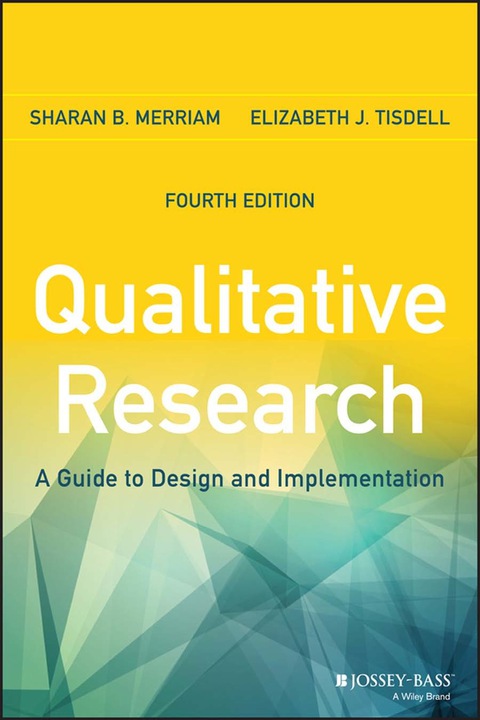Description
Efnisyfirlit
- Contents
- Preface
- The Authors
- Part One: The Design of Qualitative Research
- Chapter One: What Is Qualitative Research?
- The Nature of Qualitative Research
- Where Does Qualitative Research Come From?
- Philosophical Perspectives
- Definition and Characteristics of Qualitative Research
- Focus on Meaning and Understanding
- Researcher as Primary Instrument
- An Inductive Process
- Rich Description
- Other Characteristics and Competencies
- Summary
- Chapter Two: Six Common Qualitative Research Designs
- Basic Qualitative Research
- Phenomenology
- Ethnography
- Grounded Theory
- Narrative Inquiry
- Qualitative Case Studies
- When the Types of Qualitative Research Overlap
- Summary
- Chapter Three: Expanding the Qualitative Paradigm: Mixed Methods, Action, Critical, and Arts Based R
- Mixed Methods Research
- A Brief History of Mixed Methods Research
- Types of Mixed Methods Research
- Action Research
- Principles of Action Research
- Types of Action Research
- Critical Research
- Goals and Types of Critical Research
- Attending to Positionality and Reflexivity in Critical Research
- Arts Based Research
- Use of the Arts in Data Collection and Research Presentation
- Arts Based Research about Artists and Artistic Processes
- Summary
- Chapter Four: Designing Your Study and Selecting a Sample
- Selecting a Topic
- The Research Problem
- The Theoretical Framework
- What Is a Theoretical Framework?
- Identifying Your Theoretical Framework
- Reviewing the Literature
- Why Review the Literature?
- Conducting and Writing Up a Literature Review
- Sample Selection
- Types of Purposeful Sampling
- “Two-Tier” Sampling
- How Many in the Sample?
- Summary
- Part Two: Collecting Qualitative Data
- Chapter Five: Conducting Effective Interviews
- Interview Data
- Types of Interviews
- By Structure
- By Philosophical and Disciplinary Orientation
- Focus Group Interviews
- Online Interviews
- Asking Good Questions
- Types of Questions, Good Questions, and Questions to Avoid
- Probes
- The Interview Guide
- Beginning the Interview
- Interviewer and Respondent Interaction
- Recording and Transcribing Interview Data
- Summary
- Chapter Six: Being a Careful Observer
- Observation in Research
- What to Observe
- Relationship Between Observer and Observed
- Recording Observations
- Online Observation
- Summary
- Chapter Seven: Mining Data from Documents and Artifacts
- Types of Documents and Artifacts
- Public Records
- Personal Documents
- Popular Culture Documents
- Visual Documents
- Physical Material and Artifacts
- Researcher-Generated Documents and Artifacts
- Using Documents and Artifacts in Qualitative Research
- Limitations and Strengths of Documents and Artifacts
- Special Considerations in Dealing with Online Data Sources
- Online Versus Off-line Data
- Effects of the Medium on Data Gathering
- Ethical Issues in Online Environments
- Summary
- Part Three: Analyzing and Reporting Qualitative Data
- Chapter Eight: Qualitative Data Analysis
- Beginning Analysis During Data Collection
- Managing Your Data
- How to Analyze Qualitative Data
- The Goal of Data Analysis
- The Step-by-Step Process of Analysis
- Computers and Qualitative Data Analysis
- Data Analysis and Types of Qualitative Research
- Phenomenological Analysis
- Grounded Theory
- Ethnographic Analysis
- Narrative Inquiry
- Case Studies
- Action Research Studies
- Summary
- Chapter Nine: Dealing with Validity, Reliability, and Ethics
- Validity and Reliability
- Internal Validity or Credibility
- Reliability or Consistency
- External Validity or Transferability
- How Ethical Considerations Relate to the Trustworthiness of Qualitative Research
- Summary
- Chapter Ten: Writing Up Qualitative Research
- Preparing to Write
- Determining the Audience
- Selecting a Focus
- Outlining the Report
- Beginning to Write
- Contents of a Qualitative Study Report
- Components of the Qualitative Study Report
- Disseminating the Study Report
- Issues in Writing Up Action Research and Arts Based Studies
- Summary
- Appendix: The Methodology Section of a Qualitative Research Study
- Methods
- Design of the Study (Chapters One and Two)
- Sample Selection (Chapter Four)
- Data Collection (Chapters Five, Six, and Seven)
- Interviews
- Observations
- Documents
- Online Data
- Data Analysis (Chapter Eight)
- Pilot Study
- Validity and Reliability (Chapter Nine)
- Researcher Bias and Assumptions (Chapter Nine)
- Translation Issues
- References
- Name Index
- Subject Index
- End User License Agreement






Reviews
There are no reviews yet.